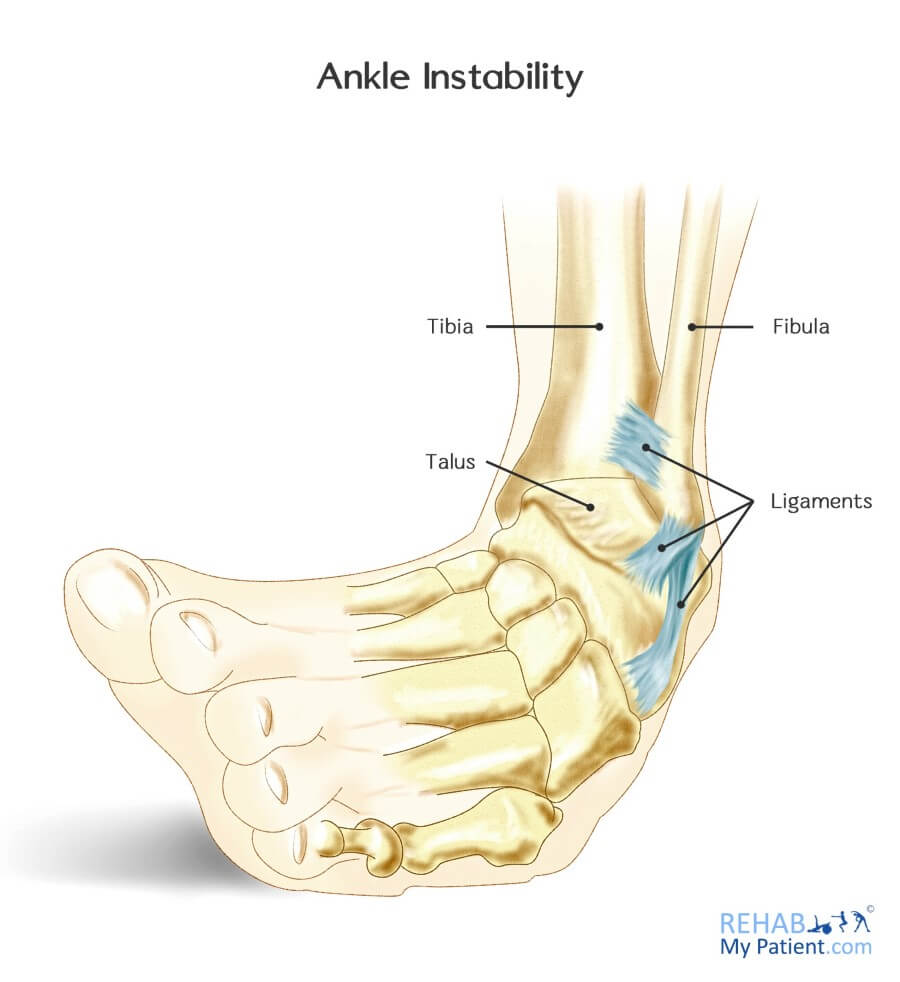
Ankle instability (sometimes known as chronic ankle instability) is often characterized when someone has a recurring giving way of the outer side of the ankle. The condition will often end up developing following previous ankle sprain or injury. Most of the time, the giving way will occur whenever walking (typically on uneven ground) or engaging in other activities, but it can also happen when doing nothing more than standing upright. Numerous athletes, as well as other individuals, can suffer from this condition.
The big issue is this: when you sprain your ankle, you are far more likely to re-sprain your ankle in the future. In fact, around 75% of ankle sprains are recurrent. So this means an individual may suffer multiple ankle sprains. This is due to instability.
People suffering from the condition will often complain of:
- Persistent swelling and discomfort
- Tenderness or pain
· Feelings of instability or wobbling may occur in the ankle
· Repeated ankle turning, especially when engaging in sports or walking on an uneven surface
Ankle Instability Anatomy
Three different bones compose the ankle joint: the shin bone (tibia), the smaller bone within the lower leg (fibula) and the small bone nestled between the heel bone and the fibula and the tibia (talus). It takes multiple ligaments to ensure the ankle joint is stable. The ligaments on the outside of the ankle are known as the calcaneo-fibular ligament, the anterior talo-fibular ligament, and the posterior talo-fibular ligament. When one of more of these three ligaments is torn or ruptured following a particularly bad sprain, ankle instability can occur.

How to treat ankle instability:
1. Physical Therapy and/or Podiatry
Physical therapy will involve a number of different exercises and treatments to help improve your balance, strengthen your ankle, improve your range of motion and retrain all of the muscles in the foot. In the latter stages of the rehabilitation process, you might also receive training relating specifically to your sport or activity level (known as functional rehabilitation).
2. Bracing
Some patients end up having to wear a brace to provide them with the support needed for the ankle and to prevent it from turning. Bracing also helps make sure there aren’t any additional sprains. Braces can be soft, or hard, or can simply involve strapping the ankle to add support.
3. Medication
Anti-inflammatory medications, such as ibuprofen, can be prescribed to help reduce inflammation and pain. As the amount of swelling goes down, the amount of pain will decrease as well. Use for short periods of time only.
4. Surgery
In certain cases, a surgeon might recommend surgery depending upon the amount of instability and lack of response to traditional treatment methods. Surgery involves repairing or reconstructing the damaged ligaments. The surgeon will determine the best surgical procedure based upon your individual case and the severity of the instability you are dealing with currently. Recovery periods will vary accordingly, based upon the procedure performed.
Tips:
1. Ankle sprains that don’t heal properly are generally the main cause of ankle instability.
2. When an ankle sprain occurs, the ligaments become torn or stretched, which affects your ability to balance properly.
3. Proper rehabilitation is necessary to strengthen all of the muscles surrounding the ankle and retrain all of the tissues inside of the ankle affecting balance. Not doing so will lead to repeated sprains in the ankle.
4. Repeated sprains lead to instability.
5. Every time you get another sprain in the ankle, it further weakens your ligaments, which results in even more instability and the chance of developing additional ankle problems.
6. If this is your first ankle sprain, make sure you spend time with your therapist to have a full rehab plan which will help reduce the likelihood of further ankle sprains.
Regardless of which way you decide to go with your treatments, it is important to take ankle instability very seriously as it can get worse over time. See your physician and ask if getting a physical therapist is right for you or if you just need to treat it with some ibuprofen and stay off your feet for a few days. Either way, the point here, is to get it taken care of immediately.


Sign Up
Sign up for your free trial now!
Get started with Rehab My Patient today and revolutionize your exercise prescription process for effective rehabilitation.
Start Your 14-Day Free Trial